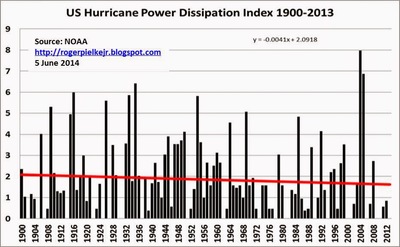U.S. hurricane drought still in record territory




Copyright 2014 Scripps Media, Inc. All rights reserved. This material may not be published, broadcast, rewritten, or redistributed.



CLEVELAND - Its been almost nine years since the last major hurricane struck the US Mainland. That's 3,230 days.
Remember, we are talking MAJOR hurricanes, of Category 3 strength or higher. The last major hurricane was Hurricane Wilma which hit Florida on October 24, 2005. This is unprecedented in the hurricane record since 1900. Its a full 2 1/2 years ahead of the second-longest US hurricane drought ever recorded.
On average, the Atlantic Basin/Caribbean area see 11 named tropical systems. Seven of those become hurricanes. Two of them are major hurricanes. We currently have Tropical Storm Marie, a former Category 5 Hurricane, in the Eastern Pacific Ocean stirring up high surf along California's southern coast. In the Atlantic, we have the third named storm of the season, Hurricane Cristobal, churning up to the west of Bermuda. Its a Category 1 storm that will not strike the US.
Of course, we have had hurricanes since 2005. 2010 was a very active year in the Atlantic basin, with 19 named storms. Twelve of those were hurricanes and five of those were major hurricanes (Category 3 or higher). Amazingly, in 2010, none of those hurricanes made landfall in the United States.
Weaker hurricanes have impacted the US Mainland since 2005. Six Category 1 or Category 2 hurricanes have reached our shores. Humberto, Ike and Dolly hit Texas. Gustav and Isaac blew into Louisiana and Irene smacked North Carolina. Sandy was not technically a hurricane when it made landfall in New Jersey and New York. It was a Category 1 storm just before it made landfall.
Dr. Roger Pielke, Jr. is a professor of Environmental Studies at the University of Colorado, Boulder. He writes: "Since 1900 US hurricane seasons have seen more than 20% less landfalls and are more than 20% less intense." Here's his data:

The above graph shows hurricane landfalls have declined in the US since 1900. And the strength of storms has declined as well. Take a look at the graph below.

Using NOAA data, we do see a decline in intensity of land falling US hurricanes since 1900.
NOAA uses the Accumulated Cyclone Energy Index (ACE). It's based on summing up the wind velocities of each tropical system every 6 hours. As Research Atmospheric Scientist, Dr. Ryan Maue states: "Since 2006, Northern Hemisphere and global tropical cyclone ACE has decreased dramatically to the lowest levels since the late 1970s." See below.

Still, hurricane frequency and intensity in the Northern Hemispheres and around the globe varies greatly year to year, season to season. That means the hurricane drought for the U.S. Mainland will eventually end...maybe even this year. My hunch is the East Coast or Florida. Stay tuned.



No comments:
Post a Comment